A cycle followed by an engine (made of one mole of an ideal gas in a cyclinder with a piston ) is shown if figure . Find heat exchanged by the enigen, with the surrodings for each section of the cycle . [CV=(3/2)R]
![A cycle followed by an engine (made of one mole of an ideal gas in a cyclinder with a piston ) is shown if figure . Find heat exchanged by the enigen, with the surrodings for each section of the cycle . [C(V) = (3//2) R]](https://d10lpgp6xz60nq.cloudfront.net/physics_images/ARH_NCERT_EXE_PHY_XI_C11_S01_025_Q01.png)
(a) For process AB,
Volume is constant, hence work done dW = 0
Now, by first law of thermodynamics,
dQ=dU+dW=dU+0=dU
=nCvdT=nCv(TB−TA)
=32R(TB−TA) (∵n=1)
=32(RTB−RTA)=32(pBVB−pAVA)
Heat exchanged = 32(pBVB−pAVA)
(b) For process BC, p = constant
dQ=dU+dW=32R(TC−TB)+pB(VC−VB)
=32(pCVC−pBVB)+pB(VC−VB)=52pB(VC−VB)
Heat exchanged = =52pB(VC−VA) (∵pB=pCandpB=VA)
( c ) For process CD, Because CD is adiabatic, dQ = Heat exchanged = 0
(d) DA involes compression of gas from VD to VA at constant pressure pA.
∴ Heat exchanged can be calculated by similar way as BC1,
Hence, dQ=52pA(VA−VD).
Topper's Solved these Questions
- BOOK - NCERT EXEMPLARCHAPTER - THERMODYNAMICS EXERCISE - SHORT ANSWER TYPE QUESTIONS6videos
THERMODYNAMICS
- BOOK - NCERT EXEMPLARCHAPTER - THERMAL PROPERTIES OF MATTEREXERCISE - Very short Answer type Questions15videos
THERMAL PROPERTIES OF MATTER
- BOOK - NCERT EXEMPLARCHAPTER - UNITS AND MEASUREMENTS EXERCISE - Long Answer Type Questions9videos
UNITS AND MEASUREMENTS
Similar Questions
A cycle followed by an engine (made of one mole of an ideal gas in a cyclinder with a piston) is shown in (figure). Find heat exchanged by the engine, with the surrounding for each section of the cycle. [CV=(3/2)R]
AB : constant volume BC : constant pressure
CD : adiabatic DA : constant pressure.
 View Solution
View SolutionA cycle followed by an engine (made of one mole of perfect gas in a cylinder with a piston) is shown in figure.
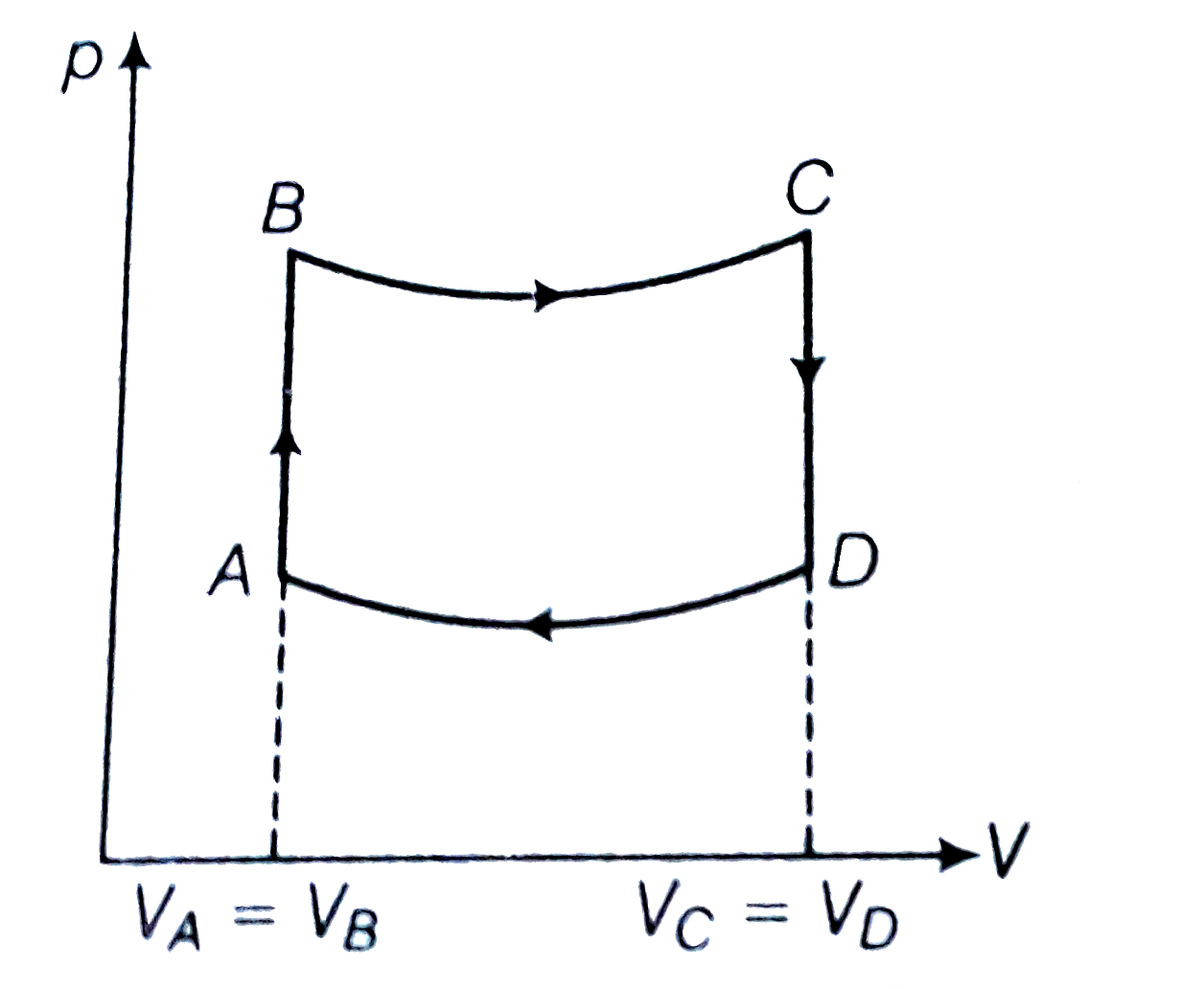
A to B volume constant, B to C adiabatic, C to D volume constant and D to A adiabatic
VC=VD=2VA=2VB
(a) In which part of the cycle heat is supplied to the engine form outside?
(b) In which part of the cycle heat is being given to the surrounding by the engine ?
(c ) What is the work done by the engine in one cycle ? Write your answer in term of pA,pB,VA ?
(d) What is the efficiency of the engine ?
(γ=53 for the gas), (CV=32R for one mole )View Solution
Knowledge Check
- Question 1 - Select One
A cycle followed an engine (made of one mole of an ideal gas in a cylinder with a piston) is shown in figure The heat exchanged by the engine with the surroundings at constant volume is (Take CV=32R)
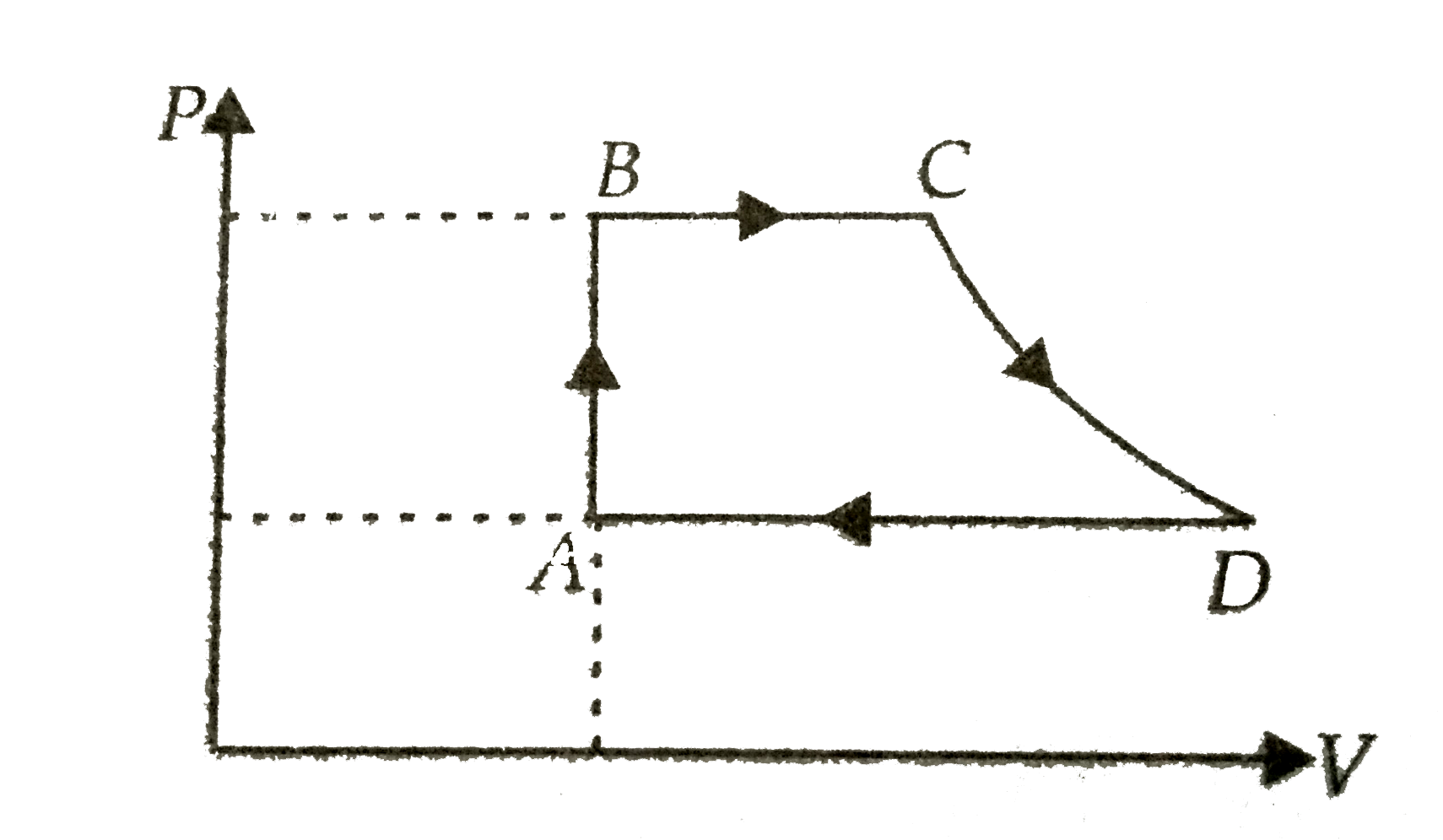 A(PB−PA)VAB12(PB−PA)VAC32(PB−PA)VAD52(PB−PA)VA
A(PB−PA)VAB12(PB−PA)VAC32(PB−PA)VAD52(PB−PA)VA - Question 2 - Select One
The cycle in the figure followed by an engine made of an ideal gas in ca cylinder with a piston, the heat exchanged by the engine with the surroundings for adiabatic section AB of cycle is (CV=32R)
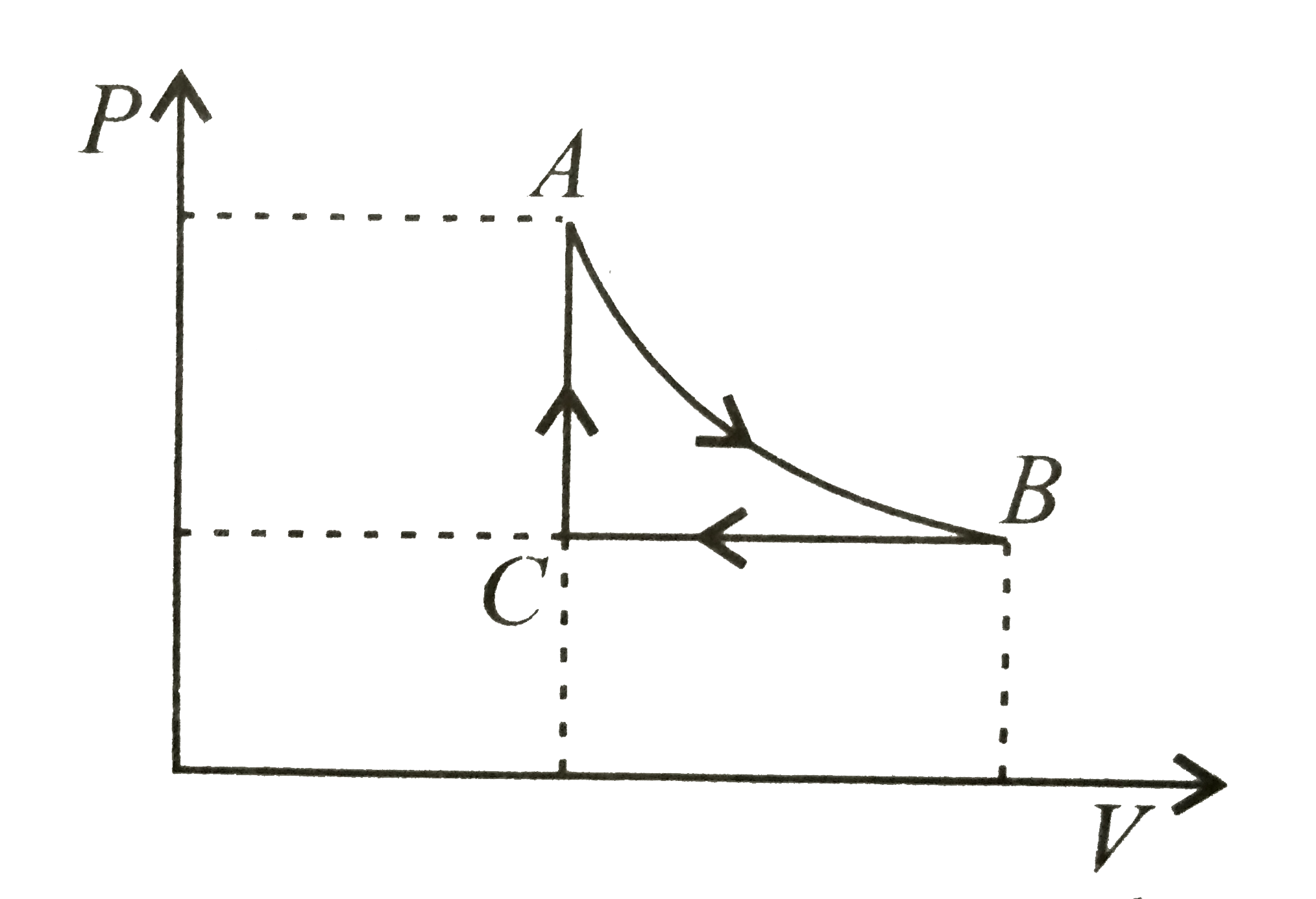 A32(PB−PA)VAB52PA(VA−VB)C12(PA−PB)(VA−VB)DZero
A32(PB−PA)VAB52PA(VA−VB)C12(PA−PB)(VA−VB)DZero - Question 3 - Select One
One mole of an ideal monoatomic gas undergoes a process as shown in the figure. Find the molar specific heat of the gas in the process.
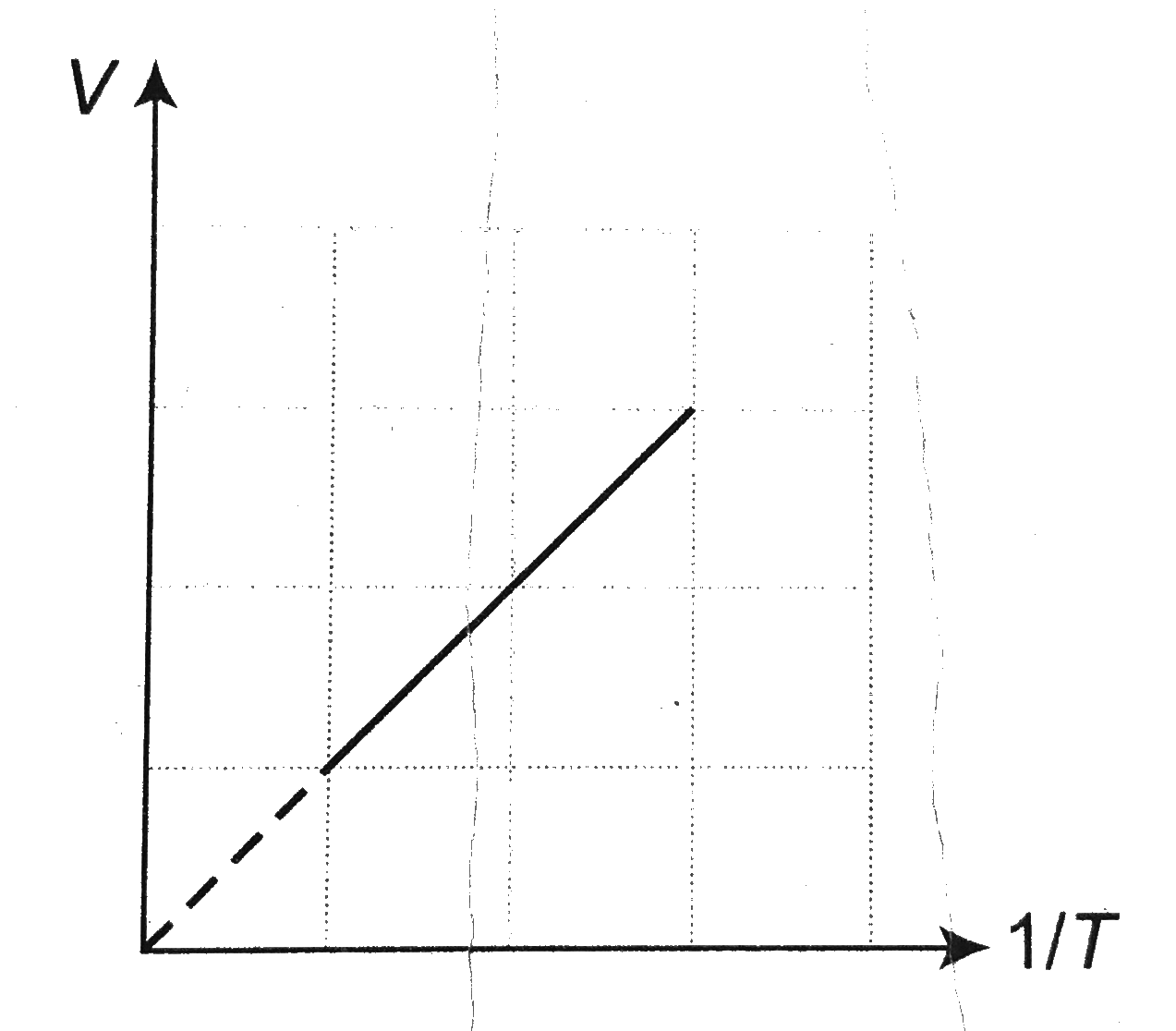
R is a gas constant.A3R4BR2CR3D2R3
A cycle followed by an engine (made of one mole of perfect gas in a cyclinder with a piston) is shown in (figure)
A to B: volume constant B to C: adiabatic
C to D: volume constant D to A: adiabatic
Vc=VD=2VA=2VB
(a) In which part of the cycle heat is supplied to the engine fron outside?
(b) In which part of the cycle heat is being given to the surrounding by the engine?
(c ) What is the work done by the engine in one cycle? Write your answer in term of PA,PB,VA.
(d) What is the efficiency of the engine? (γ=5/3for the gas), (Cv=32Rfor one mole)
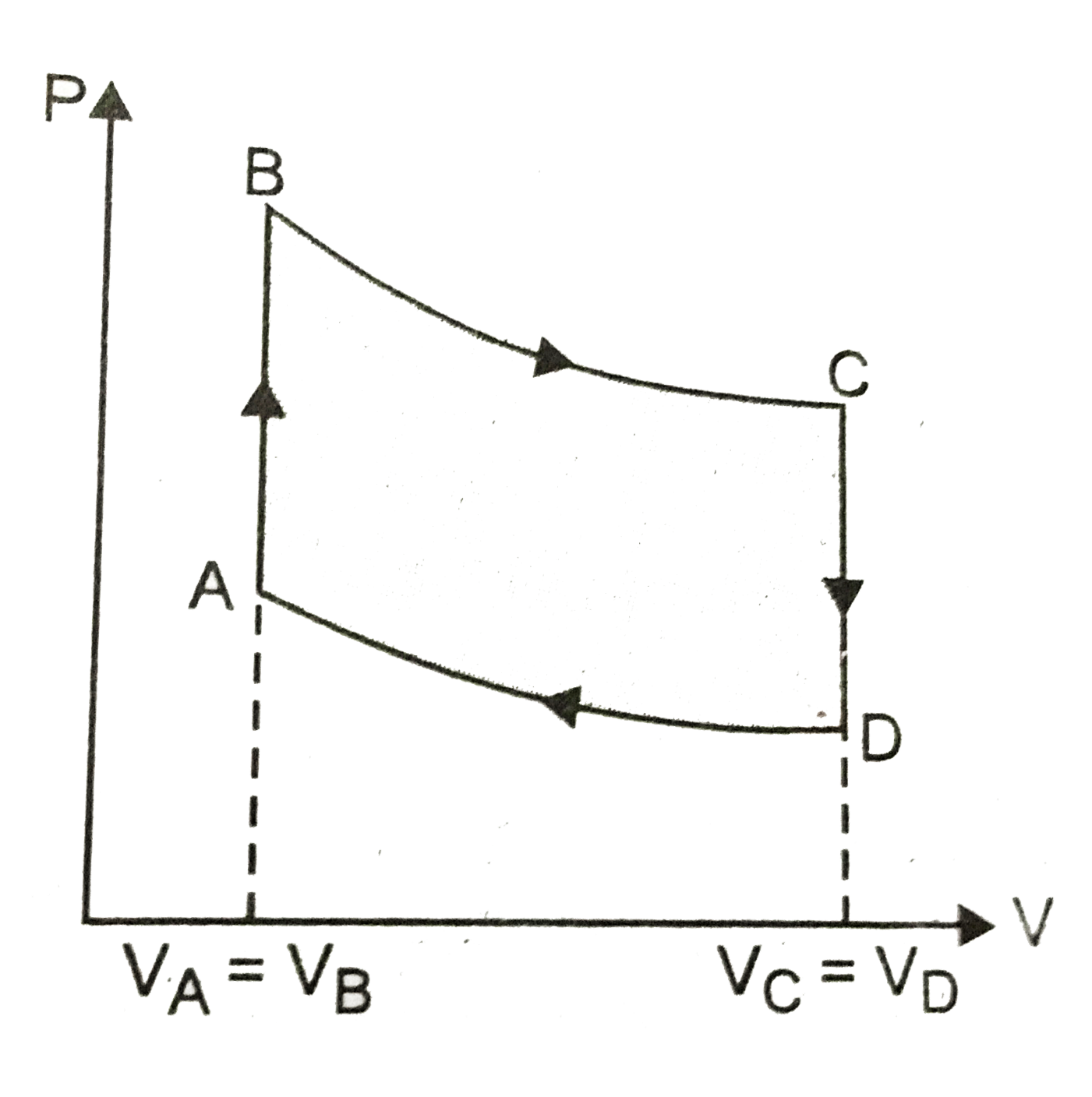 View Solution
View SolutionTwo moles of a monatomic ideal gas undergo a cyclic process ABCDA as shown in figure. BCD is a semicircle. Find the efficiency of the cycle.
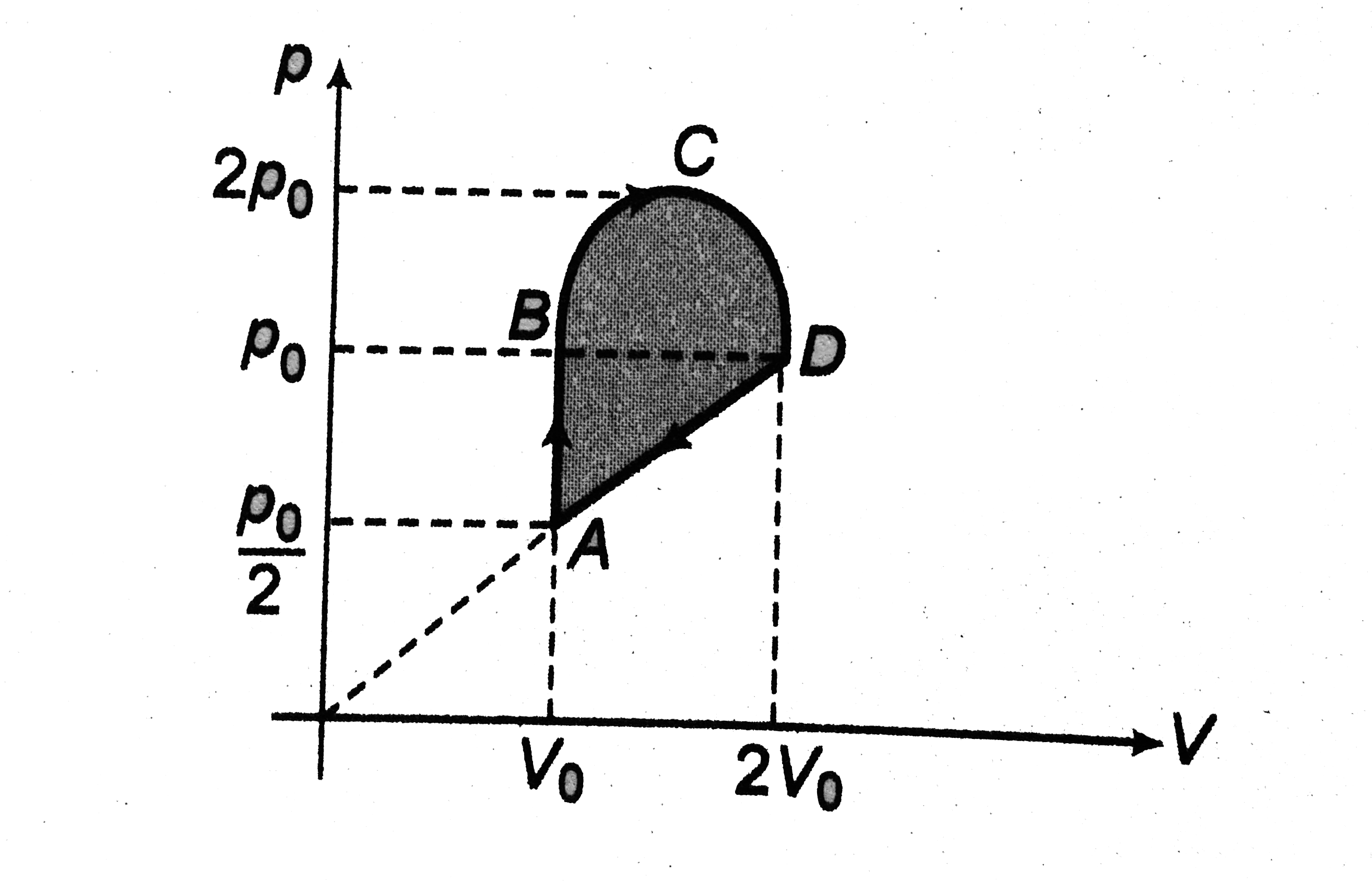 View Solution
View SolutionOne mole of a monatomic ideal gas is taken along the cycle ABCA as shown in the diagram.
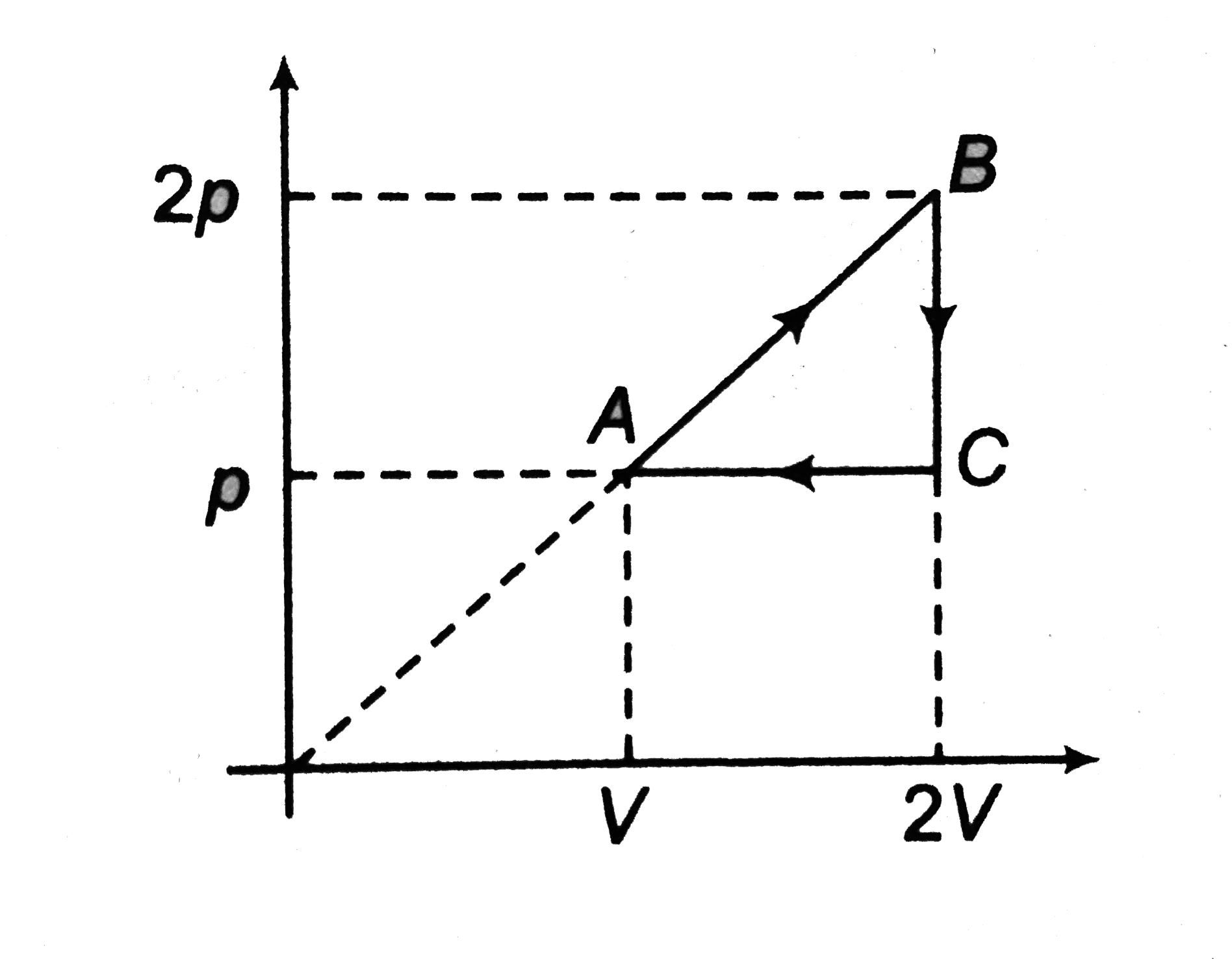
The net heat absorbed by the gas in the given cycle isView SolutionA heat engine carries one mole of an ideal monoatomic gas around the cycle as shown in the figure, the amount of heat added in the process AB and heat removed in the process CA are :
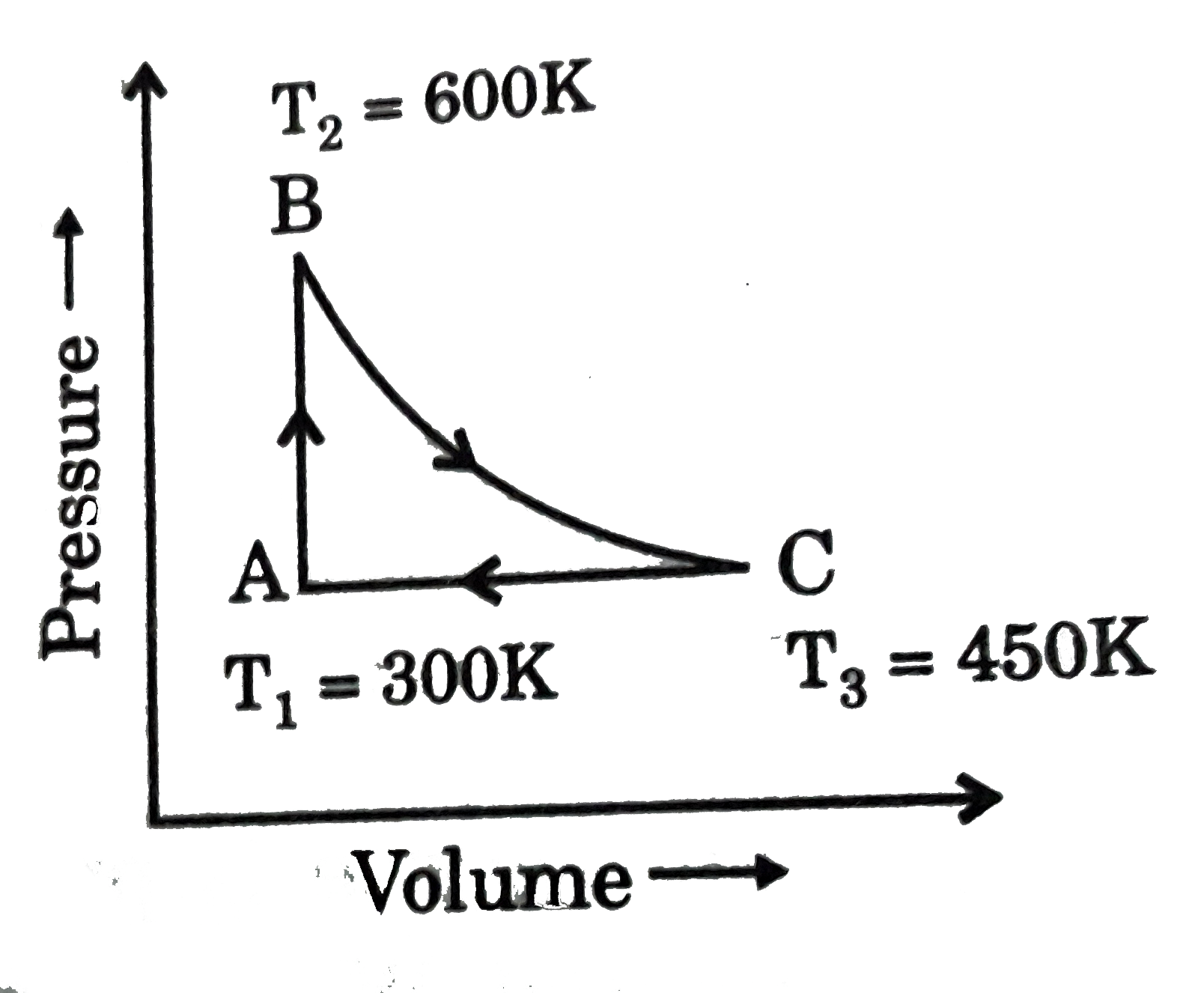 View Solution
View SolutionOne mole of an ideal monoatomic gas is caused to go through the cycle shown in figure.Then the change in the internal energy of gas from a to b and b to c is respectively :
 View Solution
View Solution

